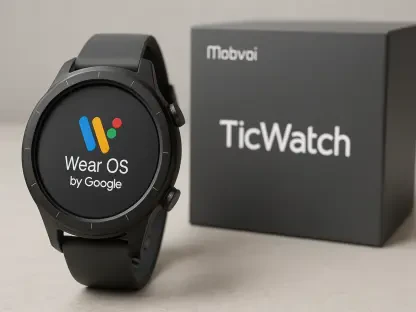What drives the relentless pace of smartphone innovation, where each year devices become smarter, faster, and more integral to daily life? In a stunning series of reveals during Week 39, MediaTek and Qualcomm have unleashed their latest chipsets—Dimensity 9500 and Snapdragon 8 Elite Gen 5—promising to elevate mobile experiences to unprecedented heights. Paired with flagship device launches from Xiaomi, Vivo, and Oppo, this wave of technology marks a pivotal moment in the industry, captivating tech enthusiasts and everyday users alike with the potential to transform how phones are used.
The Stakes of Silicon Supremacy
At the heart of this technological surge lies a critical truth: chipsets are the beating heart of modern smartphones, dictating performance, efficiency, and the ability to harness cutting-edge features like AI. The unveiling of MediaTek’s Dimensity 9500 and Qualcomm’s Snapdragon 8 Elite Gen 5 isn’t just another product cycle; it’s a response to soaring consumer demands for seamless multitasking, immersive gaming, and longer battery life. These advancements signal a fierce rivalry in the semiconductor space, where every percentage point of performance gain can redefine market leadership.
This moment also reflects a broader shift in the mobile landscape. With smartphones evolving into indispensable tools for work, entertainment, and connectivity, manufacturers are under pressure to integrate chips that not only keep up but also anticipate future needs. The impact of these releases extends beyond specs, promising to shape the design and capabilities of devices hitting shelves in the coming months.
Inside the Powerhouses: Dimensity 9500 and Snapdragon 8 Elite Gen 5
Diving into the technical marvels, Qualcomm’s Snapdragon 8 Elite Gen 5 delivers a staggering 20% boost in CPU performance and 35% better power efficiency compared to its predecessor. Its GPU enhancements include a 23% performance increase and 20% higher efficiency, while a 25% uplift in Ray Tracing ensures breathtaking visuals for gamers. Additionally, the Hexagon NPU and Qualcomm Sensing Hub pave the way for deeply personalized AI interactions.
MediaTek’s Dimensity 9500, meanwhile, pushes boundaries with an ‘All Big Core’ octa-core architecture reaching speeds of 4.21GHz. This chipset offers a 32% improvement in single-core performance and 17% in multi-core tasks, alongside a remarkable 55% efficiency gain at peak levels. With a 33% faster GPU, 42% better GPU efficiency, and a 33% enhanced ninth-gen NPU for generative AI, it stands as a formidable contender in flagship silicon.
These chips are already making waves in real-world applications, powering devices like Xiaomi’s 17 series and slated for Vivo’s X300 lineup. Their capabilities set a new standard for what premium smartphones can achieve, from rendering lifelike graphics to enabling AI-driven features that adapt to user behavior.
Industry Echoes and User Transformations
Voices from the tech sphere are resounding with excitement over these developments. A Qualcomm representative emphasized, “The Snapdragon 8 Elite Gen 5 goes beyond raw speed; it’s engineered to create unique, tailored experiences through AI.” This perspective underscores the chipset’s potential to redefine everyday interactions, from smarter voice assistants to predictive app behaviors.
On the other side, early testers of the Dimensity 9500 have lauded its efficiency under heavy workloads. A prominent tech analyst remarked, “Even in early builds, the power savings at maximum performance are striking, which could be a game-changer for power users.” Real-world impacts are already visible, with devices like Xiaomi’s 17 Pro Max boasting a massive 7,500mAh battery supported by Snapdragon tech, promising extended usage without frequent recharges.
These advancements aren’t confined to lab tests or spec sheets. They’re poised to alter how consumers engage with technology, enabling longer gaming sessions, smoother productivity, and more intuitive interfaces. The ripple effect of such innovation is set to influence everything from app development to user expectations in the mobile ecosystem.
Device Debuts Stealing the Spotlight
Beyond the chips themselves, the devices they power are grabbing headlines. Xiaomi’s 17 series, including the 17, 17 Pro, and 17 Pro Max, all harness the Snapdragon 8 Elite Gen 5, featuring impressive specs like 6.3 to 6.9-inch 120Hz LTPO AMOLED displays and batteries ranging from 7,000mAh to 7,500mAh with 100W charging. Unique additions, such as secondary rear displays on the Pro models, highlight experimental design trends.
Elsewhere, Xiaomi’s 15T and 15T Pro target performance enthusiasts with MediaTek’s Dimensity 8400 Ultra and 9400+ chips, blending high-refresh-rate AMOLED screens with robust camera systems. Meanwhile, Vivo’s X300 series, launching soon in China, and Oppo’s Find X9, confirmed for global release, leverage the Dimensity 9500 to offer cutting-edge Android experiences, large batteries, and advanced imaging capabilities.
This flurry of launches illustrates a clear trend: manufacturers are racing to pair top-tier silicon with innovative hardware, from expansive displays to enhanced power management. The diversity in approach—whether through dual displays or international rollouts—demonstrates a market striving to cater to varied consumer preferences while pushing technological limits.
Navigating the Next Generation of Mobile Tech
For consumers eyeing an upgrade, the influx of new chipsets and devices presents both opportunity and complexity. Those prioritizing gaming and visual fidelity might gravitate toward Snapdragon 8 Elite Gen 5-powered phones like the Xiaomi 17 series, thanks to superior Ray Tracing capabilities. Conversely, users focused on multitasking and AI enhancements could find the Dimensity 9500 in Vivo’s X300 or Oppo’s Find X9 more aligned with their needs.
Key considerations extend beyond the chipset. Battery capacities exceeding 7,000mAh and high-refresh-rate AMOLED displays are becoming standard in flagship models, ensuring longevity and smooth interactions. Additionally, global availability, as seen with Oppo’s Find X9, means premium technology is reaching wider audiences, making it crucial to track regional release schedules.
Ultimately, staying informed about these developments empowers better decision-making. By aligning device features with personal priorities—whether it’s camera prowess, battery life, or raw performance—users can select smartphones that truly enhance their digital lives in this rapidly evolving landscape.
Reflecting on a Milestone Moment
Looking back, Week 39 stood as a defining chapter in mobile technology, with MediaTek and Qualcomm unveiling the Dimensity 9500 and Snapdragon 8 Elite Gen 5, setting benchmarks that reshaped industry standards. These chipsets, integrated into groundbreaking devices from Xiaomi, Vivo, and Oppo, highlighted a collective drive toward performance, efficiency, and innovation. As the dust settled, the focus shifted to actionable steps for the future: consumers were encouraged to evaluate upcoming releases based on specific needs, while manufacturers faced the challenge of sustaining this momentum. The path ahead promised further exploration of AI capabilities and design ingenuity, ensuring that the evolution of smartphones remained a dynamic and user-centric journey.









